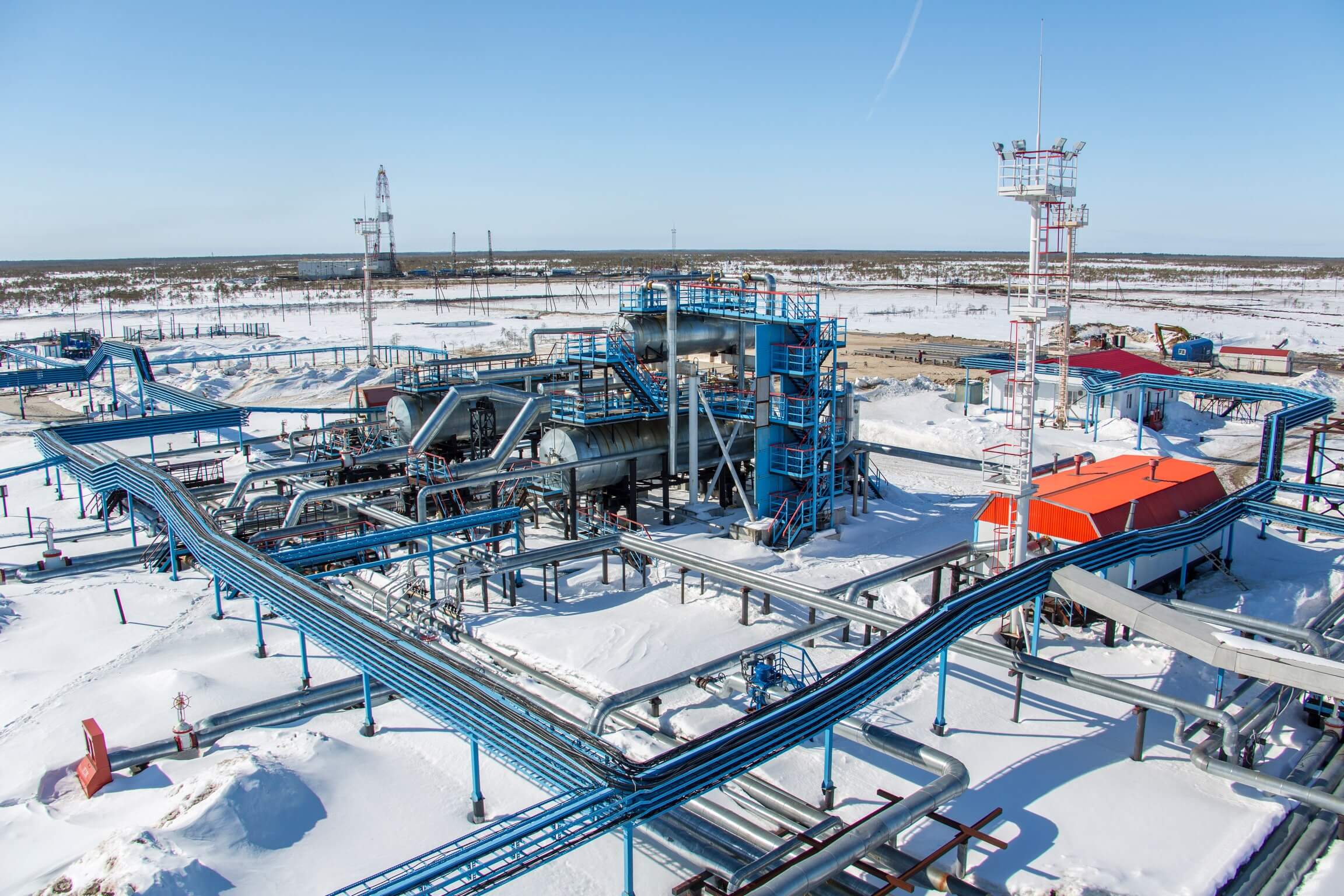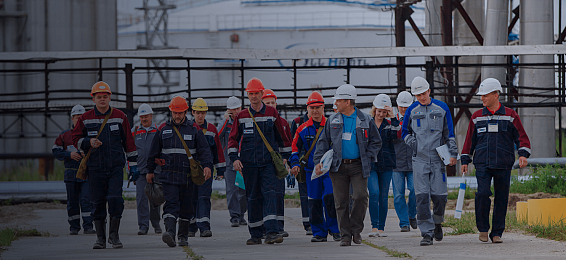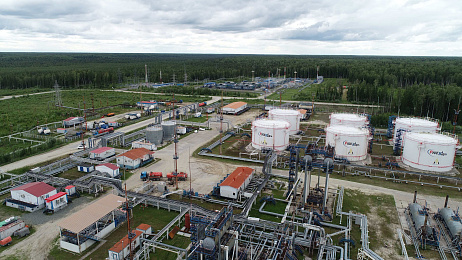Technological development

Production process automation
The Company has approved a strategy to enhance the production processes automation, which is being successfully implemented. This improves the quality of management, speeds up the decision-making, ultimately reducing the cost of oil and gas production. Subsequently, this simplifies the planning of field development and operation.
Since 2017, OIS "Production", OIS "Shahmatka" and "NGT SMART", OIS "Factor Analysis" have been implemented and are successfully operating.
For the Company it means:
- single integrated database;
- unified information processing algorithms;
- integrating the geology and production;
- analysis of the efficiency of field development;
- well intervention planning, well intervention efficiency analysis;
- comparison and analysis of planned and actual production indicators.
In 2018, a pilot installation of the ADVANTA digital system for project management in capital construction was carried out. The system proved to be highly effective and was put into commercial operation in 2019. In the current period, the System is used to conduct a full cycle of development of design and estimate documentation, from the development of specifications and design assignments to the uploading of project documentation after approval by Glavgosexpertiza.
In 2019, an advanced domestic software package for the design of hydraulic fracturing (fracking) was introduced. It`s application enabled enhanced control over the hydraulic fracturing operations and developing an optimal hydraulic fracturing design for specific geological conditions, including for complex conditions of the Bazhenov formation and Achimov deposits.
Since 2019, in the Subsurface Use Monitoring System, the process of calculating MET rate has been automated and the process of generating RussNeft- format regulated report has being implemented on the basis of State Register of Reserves data. The report is stored and visualized in the System. Automation helps to reduce labor resources and increase the accuracy of the calculations needed.
Since 2020, as part of the development of Upstream information systems, the following electronic modules continue to be operated:
- of the OIS Tekhnolog, where various functions of monitoring of well measuring parameters, coming directly from the field telemetry system are implemented;
- of the OIS Field Equipment, where real-time records of tubing and sucker rods with the functions of calculating quarterly and semi-annual availability, and reconciliation with accounting are provided;
- of the automated system of planning and analysis of well intervention efficiency, which allows to improve the timeliness of technological calculations, introduce electronic interaction of specialists, automate some functions for the formation of immediate reporting and analysis of the effectiveness of well intervention.
The Company adheres to the principles of responsibility in elaborating civil solutions using artificial intelligence (AI) and in 2023 joined the AI Code of Ethics (hereinafter referred to as the Code), as well as undertakes to follow the provisions, rules and principles set up in the Code.
Since 2023, the Company has been implementing a number of digital solutions with AI elements. At the moment, the Company is testing, at the stage of pilot tests, a third party "Virtual Flow Meter" model, which allows, based on the correlation of many parameters, to determine the dynamics of the current well flow rate and identify criteria for the maximum flow rate.
Competencies in the development of hard-to-recover reserves (HTR reserves) and well stimulation technology
In 2019-2023, efficiency in operations with HTR reserves was ensured by the Integrated System of Field Development Optimization introduced in the Company. The main components of the system are:
- Unified digital information and analysis system for improving the efficiency of development;
- Modern approaches and software for Proxy and 3D geological and hydrodynamic modelling, taking into account geomechanics and nonlinear filtration in the reservoir;
- A system for operational streamlining of development in production drilling zones, taking into account existent geology, geomechanics and actual production data for the construction of new wells;
- Integrated multivariate techno-economic modelling of field development strategy;
- Factor analysis of base production and well intervention, Integral analysis of the current state of development, well intervention planning.
The main achievements and challenges of the Integrated System of Field Development Optimization as of 2023:
- At the Verkhne-Shapshinskoye field ~ 60% of oil is currently produced only through the reservoir pressure maintenance system (RPM), and the accumulated effect of the RPM at the beginning of 2024 is 2.4 million tons.
- Optimization of the systems for flanks development of Tagrinskoye and the South part of Verkhne-Shapshinskoye fields allowed to engage HTR reserves in the development with maximum economic effect.
Horizontal wells completion technologies for MSHF
Since 2016, the Company has been implementing projects for drilling horizontal wells with multi-stage hydraulic fracturing (MSHF). In performing MSHF, special attention shall be paid to completion systems, since implementation of several fractures along one wellbore necessitates solving a number of complex technological problems, namely to ensure:
- high-quality isolation of MSHF zones from each other
- high-quality opening of the zone of hydraulic fracturing (HF)
- reducing the time of multi-stage hydraulic fracturing.
In 2016-2018, technological solutions were implemented that gave impetus to the development of cost optimization processes for MSHF, while increasing technological efficiency and reducing the time spent on operations. The following solutions were tested and implemented:
- ball arrangements that allow performing staged hydraulic fracturing in an open borehole with the help of a system of swellable packers and ball couplings of MSHF.
- sliding couplings with the possibility of re-closing (ball arrangements);
- couplings with dissolvable saddles (ball arrangements);
- the “Mongoose” technology used in a cased horizontal borehole and implemented through the joint operation of hydraulic fracturing and coiled tubing fleets.
- the "Plug & Perf" technology - a technology using a geophysical cable for hydraulic fracturing in a cased horizontal borehole.
In 2019, the implementation of a program for the construction and completion of horizontal wells in a 2-column scheme with a horizontal section length of over 500 meters and reservoir exposure angle of more than 90° was initiated, which reduces specific cost of new wells.
In 2020, high indicators were achieved due to the implementation of technological solutions to increase the length of horizontal wells sections from 500 to 750 meters. The average annual increase in oil production from horizontal wells was 59.3 tons/day, with the planned 48 tons/day.
In December 2020, well 46012 was drilled and commissioned in the southeastern part of the South reservoir of the Achimov deposits of the Tagrinskoye field with a horizontal section length of 1000 meters. The 10 hydraulic fracturing stages have been performed at the well. In addition to the standard proppant, the SANDRIT propping agent (fractionated quartz sand), weighing 264 tons (38% of the total volume) was used. The use of SANDRIT helped to reduce proppant costs by 43%, while the total cost of hydraulic fracturing was reduced by 14%. The initial well flow rate was 175.5 tons/day. In 2021, drilling of 26 wells out of the planned 48 at the Tagrinskoye field is scheduled using a similar design, accounting for more than 50% of the Company’s drilling volume of the Varyogan oil block.
In 2021, pilot work was successfully carried out using an improved stinger design for wells with a 146x114 mm production casing. The modified “stinger-polished funnel” assembly eliminated the need of the reaming stage in the interval of installing a staged cementing coupling (SCC), which led to reducing well development period by 3 days. The application of this stinger modification is currently being replicated.
The use of the SANDRIT propping agent (fractionated quartz sand) for hydraulic fracturing continues to raise. Pilot work, conducted in 2022-2023, affirmed the possibility of bringing the share of SANDRIT in the total mass of injected proppant to 30% without loss of quality.
Since 2023, in the development of deposits with HTR, the advanced technologies have been tested and applied , e.g. optimizing the design of injection equipment helps significantly raise the staging of multistage fracking with an increase in the number of couplings in the horizontal section from 10-15 to 24 ports.
In 2023, the initiative for split service, which implies leasing tubing and fountain equipment, as well as for the provision of all the main chemical components for gel systems of rupture fluid and a proppant wedging agent to the fracturing contractor on a give-and-take basis was fully implemented.
This eventually allowed for a 5% reduction in the cost of hydraulic fracturing. The vast majority of the components for the operation (97%), from the wedging agent to the biocide, are produced in the Russian Federation by domestic manufacturers.
Since February 2023, the Nizhnevartovsk branch has been implementing a cost optimization program by excluding mini hydraulic fracturing from the design, which reduces the duration of the operation and saves about 80 million rubles per year.
Since June 2023, the Nizhnevartovsk branch, after testing and formulations selection, has been using a combined stabilizer-demulsifier 2-in-1 chemical agent, which reduces the cost of hydraulic fracturing by RUB 4 mln per year.
In total, according to the results of 2023, 697 fracturing stages were completed in MSHF operations, while more than 53 thousand tons of proppant were pumped in.
Process solutions for implementation of well interventions
In May 2019, for the first time in the Company, an acid fracturing of the formation with using a polymer-free gel system at high reservoir temperature (+118°C) was carried out on the Paleozoic carbonate deposits at the Khanty-Mansiyskoye field. The use of this technology slowed the rate of reaction of the acid with the rock more than 15-fold, allowing for the deeper penetration of the working acid into the formation.
In December 2020, a high-flow, high-volume hydrochloric acid treatment of carbonate deposits was conducted at low reservoir temperatures. The work was carried out in the Ulyanovsk branch of the Company. The uniqueness of the work lies in the fact that as a working fluid we used a higher viscosity polymer-free acidic gel based on surfactants. The use of this type of acid composition helps to achieve a significantly greater coverage of the target treatment object in terms of power and to create highly conductive channels / cracks with low residual contamination (due to the absence of polymer compounds in the acid composition). The treatment was carried out using equipment with injection rate of 2-3 m³/min. The cost of treatment is twice lower than the cost of a standard hydraulic fracturing. As a result of the work performed, a stable incremental oil rate of more than 30 tons per day was achieved.
In 2020,work was carried out on selecting the optimal acid composition for treating horizontal wells that had previously undergone multi-stage hydraulic fracturing.
In 2021, a large-scale program for stimulating horizontal wells with the selected optimal combined acid composition was successfully implemented.
In 2022, pilot survey on the use of new compositions for RIW (repair and insulation works) in complex well conditions was successfully completed. The achieved success significantly exceeds the industry average for this type of well intervention. A program has been developed for further implementation of the selected technology.
In 2023, a project was initiated for pilot testing of effective acid diversion technologies in order to enhance the efficiency of repeat combined acid treatment of horizontal wells with multi-stage hydraulic fracturing.
Artificial-lifted wells operating technologies
During the operation of the artificial lift well stock, the sequential introduction of tubing hangers with an internal polymer coating was continued. According to the results of 2023, 381 wells at the Company's fields are equipped with corrosion-proof tubing, which allows for comprehensive prevention of complications due to corrosion and deposits of asphalts, resins, and paraffins and reduce operating costs.
At the end of the year, a Mean Time Between Well Overhauls amounted to 834 days was achieved in the Company, which is 17 days higher than the previous year indicator.
In general, work regarding the operation of the artificial lift well stock is carried out in accordance with approved local regulations and annually developed Organizational and Technological Measures directly related to the Program of Increasing the Mean Time Between Overhauls, reduction of failures and less frequent approaches to wells by maintenance gangs.
Upgrade of pipelines
The Company has developed a program, which allows avoiding environmental risks and aims at diversification of hydrocarbons transportation in Nizhnevartovsk district and upgrade of lines for transporting stock-tank oil from the oilfields. The Company has started the final stage of construction of pressure oil pipeline, technical re-equipment of existing linear part facilities, oil-pumping stations and a central oil custody transfer. Also, as part of the project, tank farms at the on-site facilities of the producing enterprises are being reconstructed and upgraded.
Optimization of production process
In order to involve all the employees in optimizing production processes and costs, the Company launched a Program for collecting, accepting and implementing of organizational and technical innovations in 2017, which includes all stages of ideas’ processing - from initiation to monitoring and motivation of the authors.
The Company and its branches established scientific and technical councils for expert evaluation of ideas. Any employee can offer an idea how to optimize a production process. After the in-depth development, the scientific and technical council of the branch/the Company studies an idea and makes a decision. All the accepted ideas are then being implemented and monitored.
Within the past period, more than 570 ideas were initiated and accepted for implementation directly by the workers involved in production, covering a large number of issues from reengineering drilling processes, industrial construction, reducing energy consumption to technological improvements in production processes. The cumulative effect from implementing measures proposed by employees since the start of the Program equals approximately RUB 1.5 bn.


